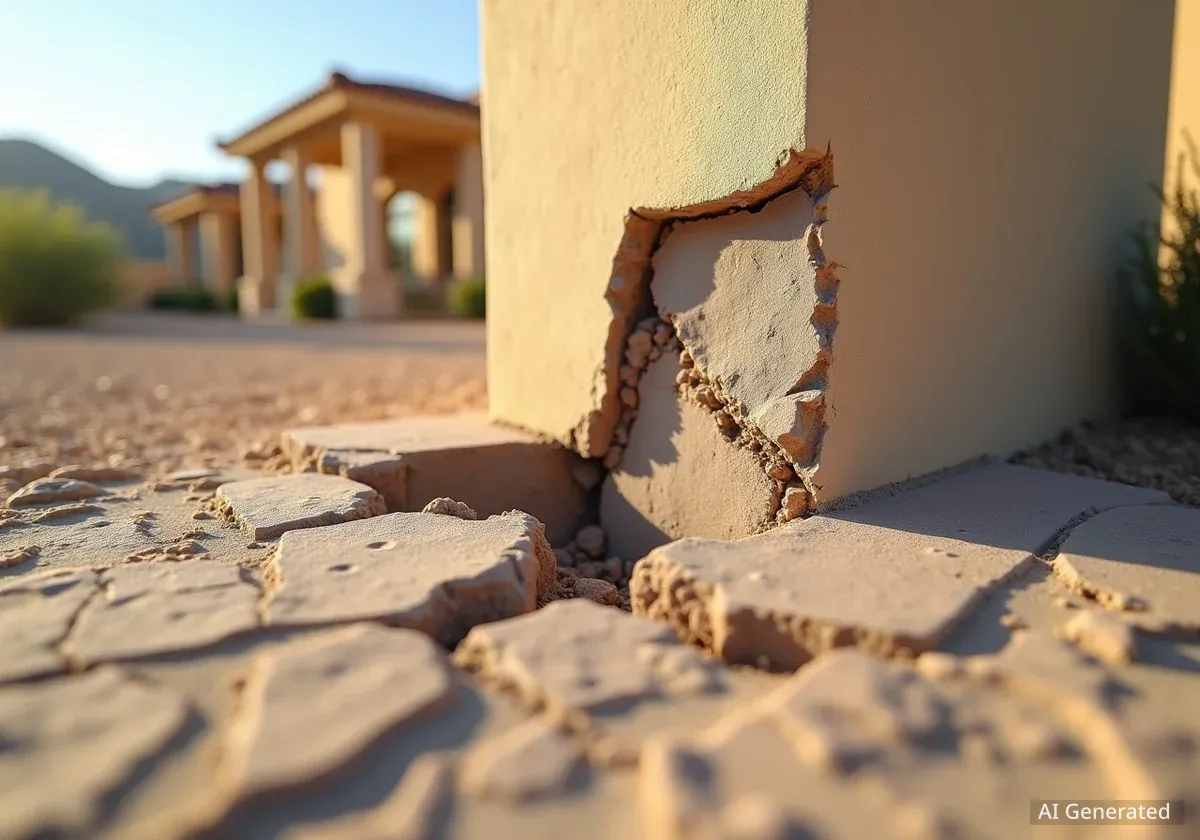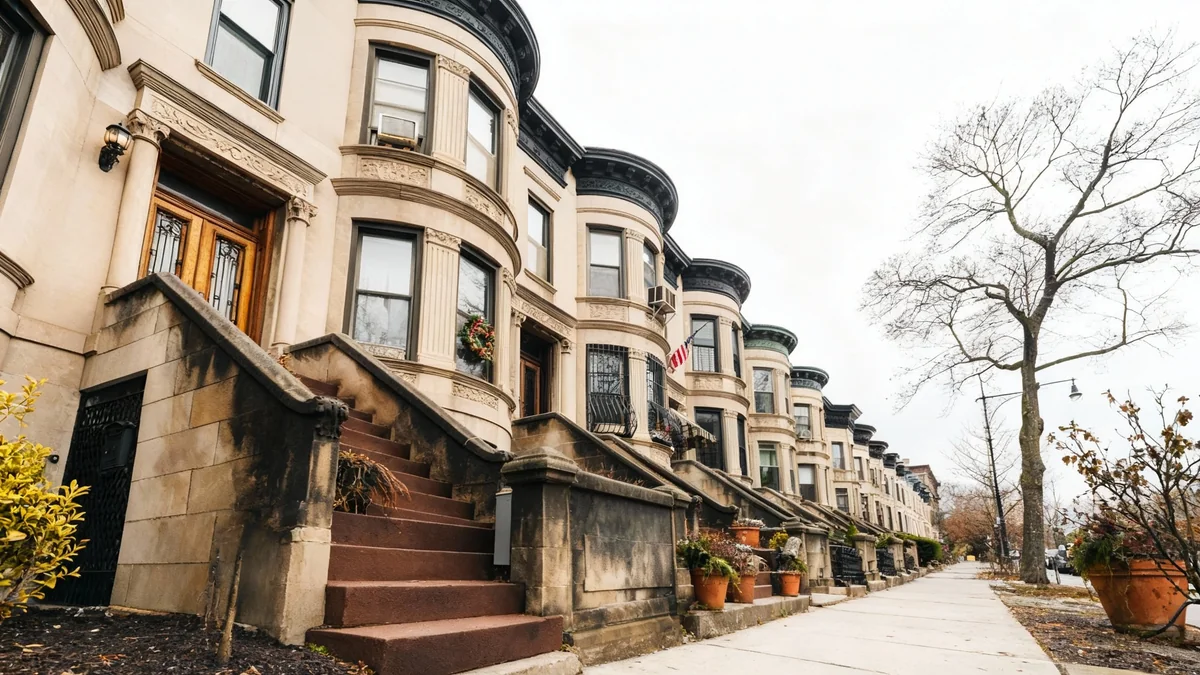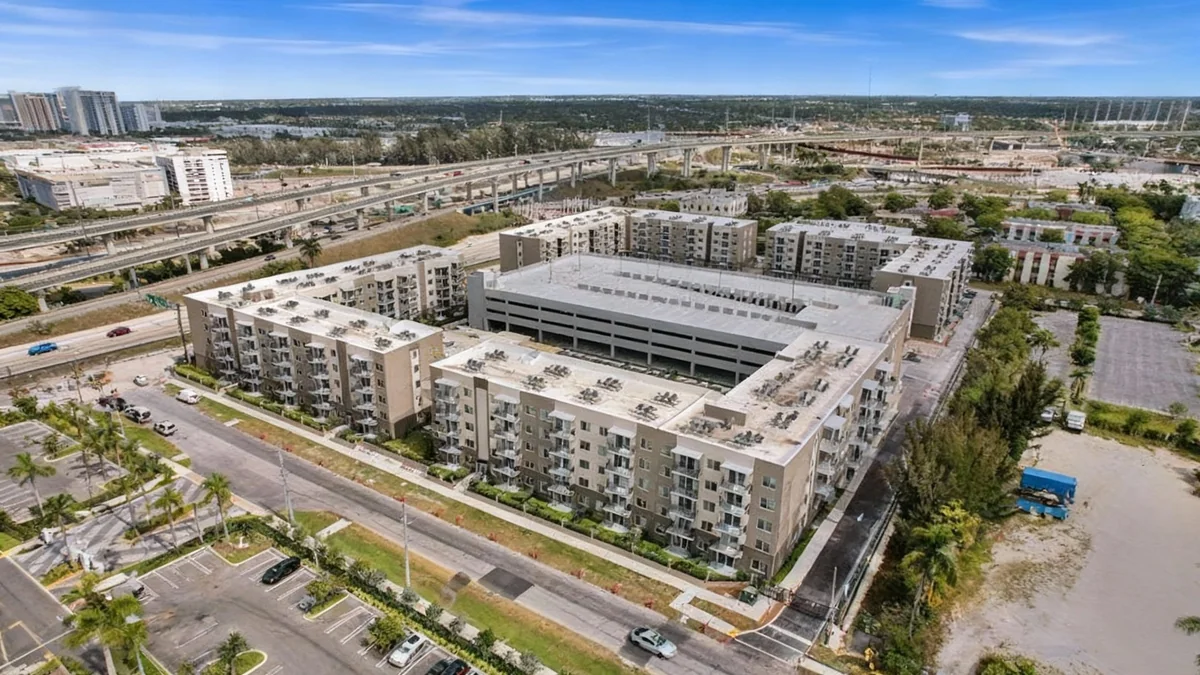Homeowners in a luxury Del Webb community in Lake Las Vegas are reporting significant structural problems in properties valued at over $1 million. Residents describe tilting floors, cracking walls, and separating patios, raising concerns about the stability of their homes built on a ridgeline.
An attorney representing the homeowners alleges the issues stem from improperly compacted soil beneath the foundations. The builder, a subsidiary of PulteGroup, states it is actively engaged with residents to address their concerns.
Key Takeaways
- Several homeowners in a Del Webb development in Lake Las Vegas report their luxury homes are tilting and cracking.
- An attorney for the residents claims improperly prepared soil is the cause, calling it "one of the worst cases" he has seen.
- Estimated stabilization costs for each property range from $300,000 to $500,000.
- The developer, PulteGroup, has faced similar construction defect allegations in other states, including Florida.
- The situation highlights broader concerns about construction quality and soil stability in new housing developments nationwide.
Structural Problems Emerge in New Development
Willie Barron purchased his home overlooking Lake Las Vegas five years ago for $1.3 million, believing he had found his dream property. Today, he navigates his house with caution due to severe structural shifts.
"My house is tilting an inch and a half from the rear to the front," Barron told FOX5 Las Vegas. He explained that the uneven surfaces create a constant risk, stating, "everything is unstable and uneven and I can’t afford to fall."
Barron is not alone. Other residents in the community have documented similar issues. Visual evidence shows wide cracks running through interior walls, kitchen tiles separating, and backyard patios pulling away from the main structure. Fences and retaining walls throughout the properties also show signs of splitting and cracking.
Expert Cites Soil Compaction Failures
Norberto Cisneros, an attorney with two decades of experience in construction defect litigation, is representing the affected families. He attributes the widespread damage to foundational problems.
"This is a classic example of soils problems," Cisneros explained. "They gutted out the community, took all the soils, and they have to re-compact it before they build the homes on top. They did not compact the soils properly here."
Cisneros described the situation as "probably one of the worst cases I’ve ever seen." The potential cost to remedy the issue is substantial, with estimates for stabilizing each home ranging from $300,000 to $500,000.
Residents fear the structural instability could lead to a catastrophic failure. "If it’s large enough … this house will go down and affect the houses below us," said homeowner John Penn, voicing concerns about the potential impact of an earthquake or severe monsoon storm.
Legal Process and Builder's Response
Under Nevada law, builders must respond to a construction defect notice within a specific timeframe. According to Nevada Revised Statute 40.6472, a builder has 90 days to provide a detailed plan to repair the alleged defects. Cisneros claims this statutory deadline has passed without the required plan from the developer.
Nevada's Construction Defect Law
Nevada's "Right to Repair" laws provide a structured process for homeowners to report construction defects. The statutes require homeowners to give builders notice and an opportunity to inspect and repair the issues before a lawsuit can proceed. The 90-day response window is a critical part of this pre-litigation process.
PulteGroup, the parent company of Del Webb, provided a statement to FOX5 regarding the matter. The company affirmed its commitment to quality and its engagement with the homeowners.
"We stand behind the quality of homes we deliver," the statement read. "We are actively engaged with homeowners in assessing their concerns and addressing warranty-related repairs."
A Pattern of Construction Issues Nationwide
The problems in Lake Las Vegas are indicative of a larger issue affecting new home buyers across the United States, where rapid construction and challenging soil conditions can lead to costly defects.
Florida's Stucco Problems
Florida has contended with what local media has termed the "billion-dollar stucco problem." Improper application of stucco on new homes has led to widespread cracking, water intrusion, and hidden mold damage. PulteGroup has also been involved in litigation there.
In 2018, the company agreed to a $78.7 million judgment to resolve claims related to stucco defects. PulteGroup also reached a settlement with the Florida Attorney General that required the company to provide millions in restitution and repairs for affected homeowners.
Challenges in Texas and California
Texas presents a different environmental challenge due to its expansive clay soils, which swell with moisture and shrink when dry. This constant movement exerts significant stress on foundations. Researchers at Texas A&M have noted that climate extremes are exacerbating the problem. In 2023, Texas lawmakers reduced the statute of repose for many construction claims from 10 years to just six, shortening the window for homeowners to take legal action.
Did You Know?
A statute of repose is different from a statute of limitations. It sets an absolute final deadline for filing a lawsuit, regardless of when the defect was discovered. Shortening this period can significantly impact a homeowner's ability to seek recourse for latent defects that appear years after construction.
California has some of the nation's most robust consumer protections, including the "Right to Repair Act." This law mandates that builders must fix certain defects if notified within specific timelines. However, a report from the UC Berkeley Terner Center for Housing Innovation found that rising litigation and insurance costs related to defect claims have slowed the development of new condominiums, showing the broader economic impact of these issues.
How Homebuyers Can Protect Themselves
Purchasing a new home is a major financial commitment, but it does not come without risks. Prospective buyers can take several steps to protect their investment.
- Research the Builder: Look into the builder's history, including any past complaints, lawsuits, or settlements related to construction quality.
- Hire an Independent Inspector: Even for a brand-new home, a qualified third-party inspector can identify potential issues like poor grading or finishing work that might hide underlying problems.
- Investigate the Land: Resources like the USDA's Web Soil Survey can provide information about the soil type on a property, indicating risks such as expansive clay or flood-prone conditions.
- Understand State Laws: Familiarize yourself with your state's laws regarding construction defects, including notification deadlines and the builder's obligation to repair.
- Review Insurance Coverage: Most standard homeowners insurance policies exclude damage from earth movement, foundation settling, and construction defects. Legal action against the builder is often the only recourse.
The experience of homeowners in Lake Las Vegas serves as a critical reminder that diligence is essential, even when buying a new, high-end property. A dream home can quickly become a financial burden if underlying construction or geological issues are not properly addressed.





